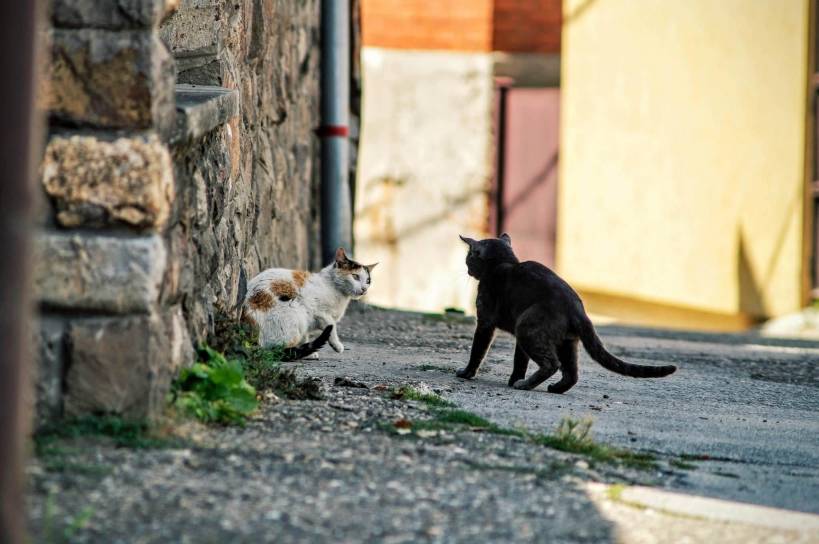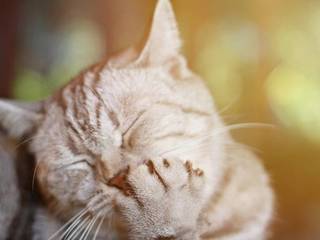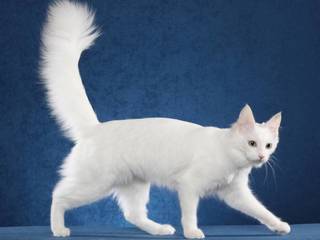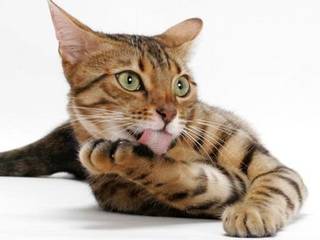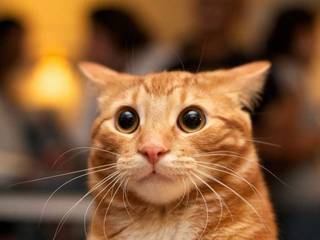In trying to understand what is on the mind of your pet, it is important to pay attention not only to the verbal cat-like sounds but also to the cat's body language. Cats always communicate with us using body language, and some use it more often than voice signals.
You have probably noticed such mundane details of feline behavior, which your kitten shows you. For example, twitches its tail, stretches over its back, showing its tummy, or slowly winks at you. Does that mean something? Yes, it does.
In this article, we discuss the most common non-verbal gestures, which show a cat, and give their interpretation.
For easy learning, the article is divided into sub-headings that consider gestures related to a particular part of the body.
1. The tail
It is wagging its tail. Wagging tail (the tail is slowly and smoothly moving from side to side) signal usually the excitement, alertness, and interest in the environment.
A waving tail. Waving the tail (the tail is moving rapidly from side to side, aggressive movement) means the cat is excited and angry. Usually, when a cat does this, it takes an aggressive position. The hair on its tail stands on the end, which is why it becomes fluffy. In this case, it is better to leave the cat alone; otherwise, you run the risk of becoming a victim of its attacks.
Twitching tail. If the cat's tail tip twitches, it means the cat is interested in something it sees. However, this gesture may also be the first sign of aggressive behavior, for example, if an alien cat invades the territory. In this case, after this gesture, it will begin to swing a tail and behave aggressively.
Shaking tail. Such a gesture is peculiar to cats, which mark their territory. In addition, the cat can shake the tip of the tail when it rubs against your legs or when you are scratching its back, especially near the tail. In this case, the shaking tail is a great gesture of affection to you.
Cocked tail. If the cat while walking is bushy-tailed, that means it is happy and confident. The rest of the non-verbal cues (eg, gait or look), will also reflect this behavior.
Partially pressed tail between the legs. This gesture usually means the cat is frightened, unhappy, or feels in danger. The accompanying non-verbal gestures: pinned ears, lowered head, the body pressed against the ground.
2. Ears
Pricked up ears. It is a gesture the cat is interested in what it hears around itself. You must have noticed how cats move their ears to hear what is happening behind, them without turning its head at the same time.
Ears pressed to the head. If the ears are pressed to the head, and their tips are directed backward, that means the cat feels the danger and similarly tries to protect its ears.
3. The head and mustache
Raised head. The value of this gesture depends on the circumstances. If the cat is happy, it raises its head, showing curiosity and confidence. Typically, this is accompanied by pricked ears. On the other hand, if the cat was cornered by another cat, it looks up, showing a dominant position, and presses the ears to the head, protecting them.
Head down. This gesture means obedience and humility. It can manifest itself in case of attacking another cat. In a calm situation, the down head can symbolize sleepiness, boredom, or peacefulness.
Cat's mustache. The whiskers can serve as an indicator of the mood of the cat. If the whiskers are pointing forward, the cat is relaxed, happy, and curious. If the whiskers are directed backward, it means the cat takes a defensive position or is going to attack.
4. Sight
Gaze, eyes wide open. Usually, such a view can be seen from fighting cats or cats, intending to attack another cat, an animal, or a human. Thus, they try to scare the enemy.
Pursy eyes, slowly blinking eyes. The significance of this gesture is opposite to the above. The cat says it likes the presence of another animal or human. It completely trusts them.
Have you ever wondered why a cat being in the same room with a few people immediately rushes to the man who does not like cats? The reason is the sight. The sight of cat fans will be drawn to the cat, why it feels threatened, and tries to stay away from them. A person, who does not like cats, does not want to look at them because he/she sincerely hopes the cat will not get in the way. Cat sees such a person only as a harmless creature in the room, so guess whom it will run for?
4. Body
Ticking over. This is a gesture of affection, love, and comfort.
Rubs against your legs. Cats do that when you want to leave its scent on you as if marking you as "their territory". It is a sign of great affection.
It somersaults on the back, showing its tummy. It means the cat obeys you. It is a compliment, showing the cat loves you and trusts you.
Straight or curved legs. If the cat is standing on straight legs, with its head raised and pricked ears, it is happy, confident, and curious. In the situation of an attack if the cat bends its fore and hind legs, it wants to avoid a fight, but if necessary, will defend itself.
Arched back. Kittens usually arch their backs for fun, they play fight. In adult cats, this gesture means the animal is preparing for a true fight. Together with this gesture, the cat may also squeeze its ears, eyes are wide open, and the hair stands on end on the back and tail.
In trying to interpret a cat's body language, it is important to pay attention to the cat's body, rather than to individual body parts. Do not forget to take into account the surrounding circumstances and the cat's vocalizations.
